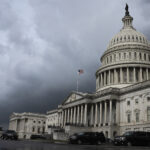Abraham Lincoln’s presidency is often defined by the Civil War, but his vision extended far beyond preserving the Union. He deeply understood the necessity of a stable and unified national economy, recognizing that sound financial policy was as crucial as military strategy. Lincoln’s early life experiences instilled in him a profound understanding of the economic hardships caused by unstable currency, shaping his resolve to establish a robust financial system for the burgeoning nation, anchored by what would become known as “Greenback Money.”
From Frontier Hardships to Fiscal Vision
Growing up in the frontier states of Indiana and Kentucky, Abraham Lincoln witnessed firsthand the economic instability caused by unreliable paper money. Local banks issued their own notes, often with dubious backing, leading to widespread confusion and hindering economic growth. This chaotic financial landscape frustrated the aspirations of ordinary people and businesses alike. These formative experiences cemented Lincoln’s belief in the necessity of a common, national currency to foster economic opportunity and stability for all Americans. This conviction would later drive his actions to introduce “greenback money” on a national scale.
Greenbacks: Financing the Union Cause
When the Civil War erupted, the Union faced immense financial challenges. To fund the war effort, President Lincoln and his Treasury Secretary, Salmon P. Chase, had to take unprecedented measures. They sought loans from foreign governments and American citizens, implemented the first federal income tax, and crucially, authorized the printing of paper money – the “greenbacks.” These notes, officially known as United States Notes, were named for their distinctive green ink on the back. The introduction of “greenback money” was a bold step, designed to provide a unified, national currency that could be used across the Union, bolstering public confidence and facilitating economic activity during wartime.
The National Banking System: Building a Lasting Legacy
Beyond the immediate needs of wartime finance, Lincoln and Chase envisioned a lasting financial infrastructure for the United States. They championed the National Banking System, designed to create a network of federally chartered banks that would issue uniform banknotes and operate under federal regulation. This system, overseen by the newly established Office of the Comptroller of the Currency, aimed to eliminate the problems of unstable state-bank notes and create a more reliable and efficient financial system. Lincoln proudly signed the National Currency Act, believing it would deliver “great benefit” to both the people and the government. He understood that “greenback money,” while initially a wartime measure, needed to be supported by a robust banking system to ensure long-term economic stability and national prosperity. As he stated in his 1864 State of the Union address, the national system would “create a reliable and permanent influence in support of the national credit and protect the people against losses in the use of paper money.”
A Vision Realized
Lincoln’s commitment to establishing a sound national currency, exemplified by the introduction of “greenback money” and the National Banking System, proved to be transformative for the American economy. These policies not only helped finance the Union victory but also laid the foundation for a more unified and prosperous nation. His legacy extends beyond the battlefield, encompassing the creation of a financial framework that continues to underpin the American economy today. Lincoln’s understanding of the importance of stable currency and sound banking remains a cornerstone of modern financial policy, and his “greenback money” stands as a testament to his enduring vision for a strong and united America.

